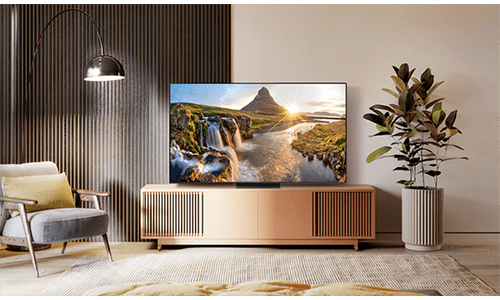A home theater wouldn’t be complete without a big screen to watch the big game on. Back in the day, getting a new TV meant a trip down to the local TV and radio shop and purchasing a TV with a screen that was likely 15 to 20 inches. The small size of those old TV screens forced families to huddle around the ole “boob tube” to watch their favorite shows such as I Love Lucy and Leave it to Beaver.
Of course, over the years, big-screen TVs have only become bigger and surprisingly more home friendly, being able to be mounted on walls for less clutter, while also delivering higher resolutions, which currently top out at 8K (7680 x 4320).
Today, the TV market is driven by buzz words such as OLED (organic light emitting diode) and QLED, as well as other advanced technologies that include miniLED and microLED displays. Big-screen TV sizes have also exploded over the past decade with common sizes ranging from 60 to 75 inches. Moreover, many manufacturers also offer true, big-screen TV screens larger than 100 inches if 75- or 86-inch screens aren’t big enough.
Diving further into the topic of modern TVs, consumers can now choose from a wealth of manufacturers and a wealth of technologies at a choice of price points. It’s also important to point out that over the past few years a new type of big-screen TV solution—it’s not new, but it’s been refined for use in modern home environments—this solution is ultra-short throw (UST) projection systems that are marketed as laser TVs and other similar names.
The Best Big Flat Screen TV Options for Modern Home Entertainment
Summarizing what’s gone on in the home video market and specifically big-screen TVs over the past 20 years, today there are 4K and 8K products available in a choice of screen sizes, and a choice of technologies that include OLED, mini-LED, microLED, and even UST laser TV products.
Looking at some of the current big-screen TV products that populate the market, here are 16 solutions, including six laser TV products from some of the top names in home video whether you’re shopping for a living room or a extensive home theater system.
A Quick List of Some of the Top Flat Screen TVs
- AWOL Vision LTV-2500
- BenQ V5000i
- Digital Projection Radiance EV
- Epson EpiqVision LS650
- Hisense L9H
- LG Cinebeam HU85LA
- Optoma L1 Ultra-Short Throw Projector
- Panasonic Z93A and Z95A OLED TVs
- Planar DirectLight Pro Series
- Quantum Media Systems XDR3 LED Video Wall
- Roku Plus Series
- Samsung QN65QN800C
- SKYWORTH Clarus Outdoor TV
- Sony BRAVIA XR65A80L
- TCL 98S550G
- VIZIO P-Series 75-inch 4K Smart TV
AWOL Vision Triple Laser LTV-2500 Projector
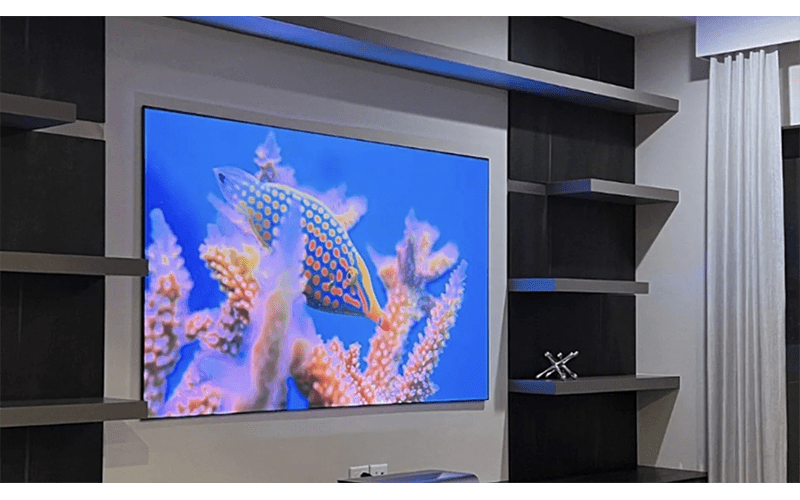
The $2,999 LTV-2500 features AWOL Vision’s RGB triple laser light engine that helps the UST projector produce up to 2,600 lumens of brightness and the ability to reproduce HDR10+ content. Additionally, the LTV-2500 is also able to reproduce Dolby Vision HDR, and it is capable of producing more than a billion colors or 107% of the Rec. 2020 color gamut.
BenQ V5000i UST RGB Laser TV System
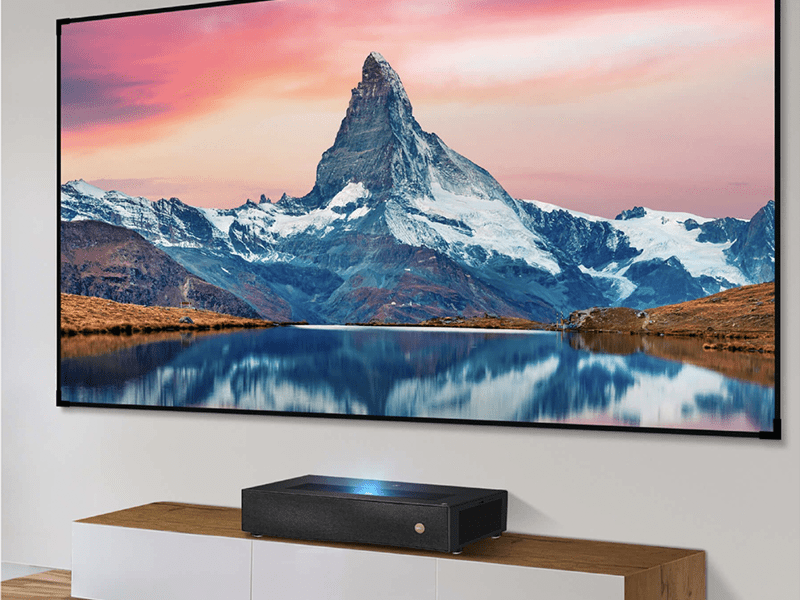
The $3,499 V5000i big-screen TV provides homeowners with an ultra-short throw (UST) projector and screen package that includes an ambient light rejecting (ALR) 100-inch screen. The projector incorporates a built-in speaker system and connectivity options such as HDMI with eARC, and the 4K, HDR10+ capable projector offers a smart TV operating system that includes a choice of streaming services.
Digital Projection Radiance EV Series MicroLED
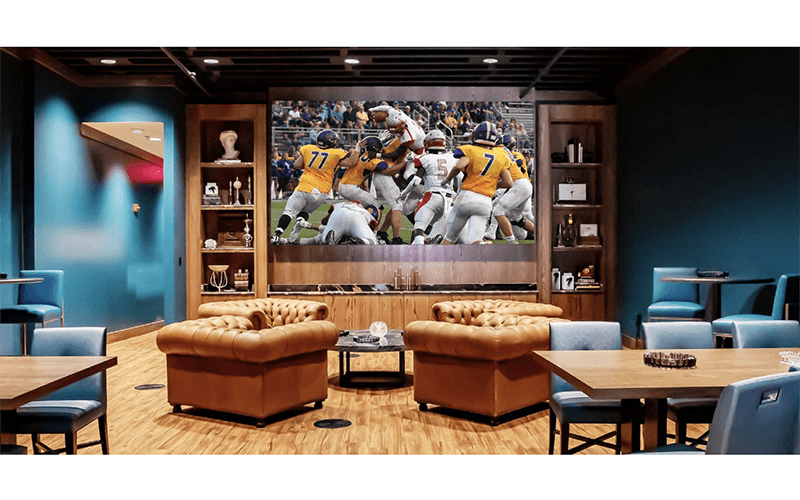
Coming from the commercial AV market, microLED is an expensive, but increasingly popular high-performance display solution that scales to custom sizes. DP’s Radiance EV Series product delivers up to 1,200 nits of brightness, as well as 100% of the DCI-P3 color gamut. The HDR10 compatible 0.9mm solution can deliver 4K images on 163-inch screen sizes.
Epson EpiqVision LS650 Laser TV system
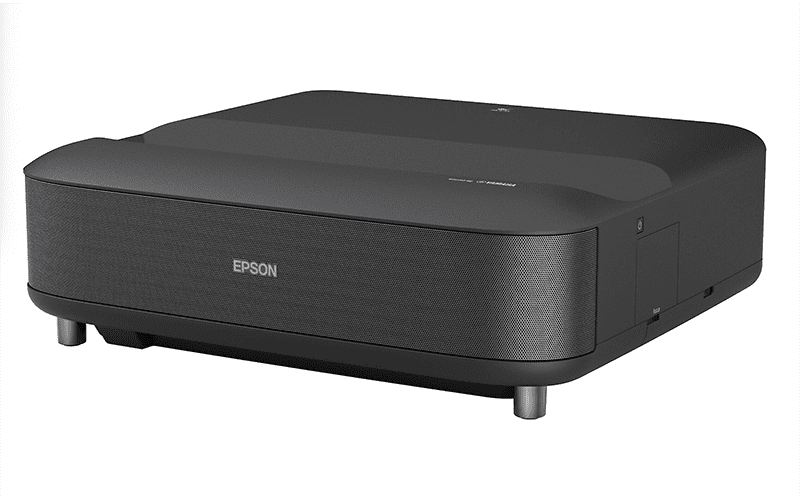
Available in a choice of white or black finishes to help it blend into home environments, the EpiqVision LS650 provides homeowners with a competitively priced $2,799.99 solution. Rated to produce as much as 3,600 lumens of brightness the LS650 incorporates Epson’s 4K Pro-UHD and 3LCD technologies to deliver 4K UHD images. The LS650 also offers built-in smart services, and it is complemented by a choice of ambient light rejecting (ALR) screens that are available in 100- or 120-inch screen sizes.
Hisense L9H Laser TV
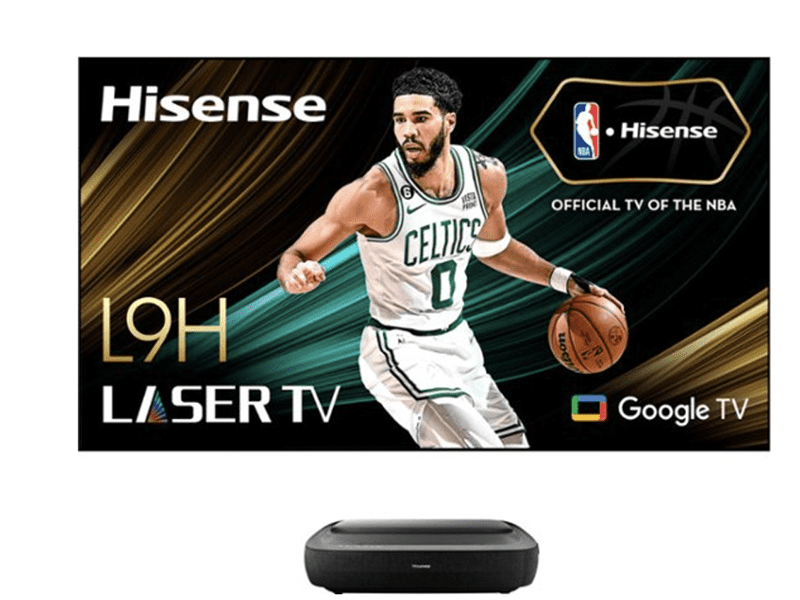
The $6,500 L9H UST projector comes with a 120-inch ambient light rejecting (ALR) screen. Hisense specifies its 120-inch 4K laser TV product to produce up to 3,000 lumens of brightness through its laser light engine. The projector is also capable of producing HDR content such as Dolby Vision, and its smart services include streaming services such as Prime Video, Disney+, Netflix, Hulu and more.
LG HU85LA 4K UHD Laser Smart Home Theater CineBeam Projector
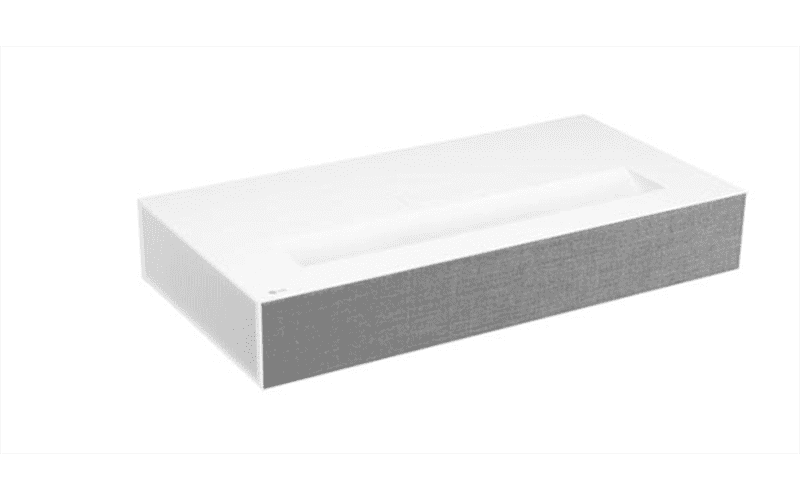
Featuring modern style, the $4,999 HU85LA UST projector produces a 4K resolution and HDR compatibility. LG states the big-screen TV solution can produce images as large as 120 inches and through its laser light engine, the DLP-based UST projector provides users as much as 20,000 hours of operational life.
Optoma L1 Ultra-Short Throw Projector
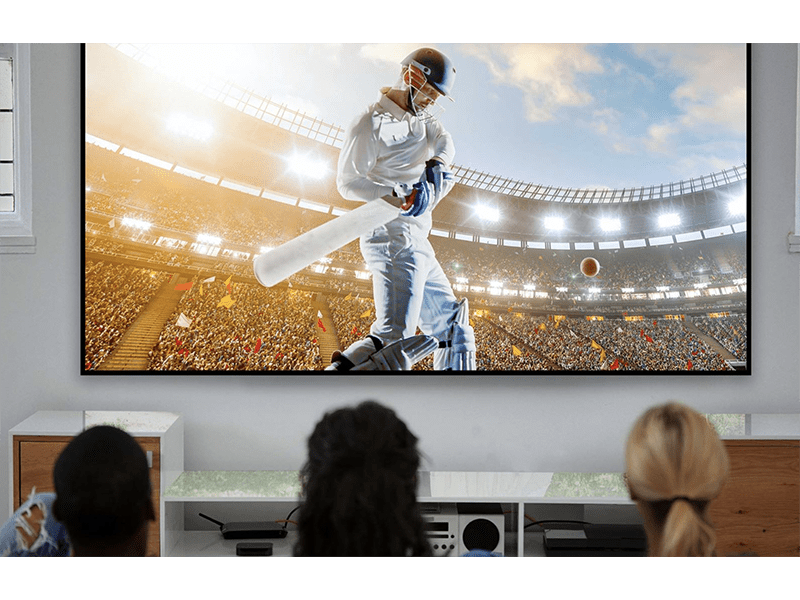
Utilizing 4LED technologies, Optoma says that its L1 UST is capable of reproducing 121% of the Rec. 709 color gamut, and it can project images as large as 105 inches. Internally, the L1 employs Texas Instruments’ DLP technologies, and through the projector’s LED-based light engine, the L1 produces up to 2,500 lumens of brightness and it delivers as much as 30,000 hours of operational life.
Panasonic Z93A and Z95A OLED TVs
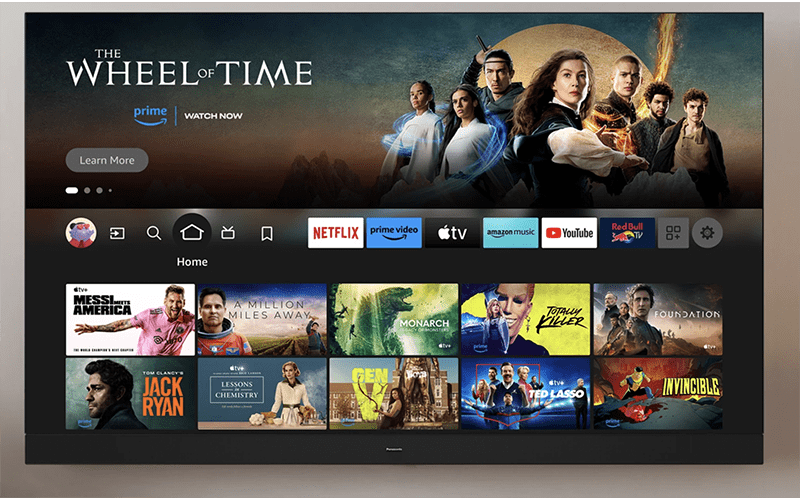
The brand new 2024 Z95A (65 inch and 55 inch) and Z93A (77 inch) OLED TVs from the global electronics company feature state-of-the-art image technologies, as well as Amazon’s popular Fire TV smart TV platform. The TVs incorporate Panasonic‘s HCX Pro AI Processor MK II to power the Master OLED Ultimate panel, while the Z93A gets Master OLED Pro Cinema processing engine. Additionally, both models feature Dolby Vision IQ, and they both offer 144Hz refresh rates.
Planar DirectLight Pro Series

Planar’s LED video wall solutions are available in a choice of sizes ranging from 109 inches to 219 inches. The line of products is also stated to deliver brightness levels as high as 1,000 nits, and because the DirectLight Pro Series has commercial video roots, Planar points out the products employ modules and cabinets with 45-degree beveled edges to enable the video walls to wrap 90 degrees around corners to allow for creative installations.
Quantum Media Systems XDR3 LED Video Wall
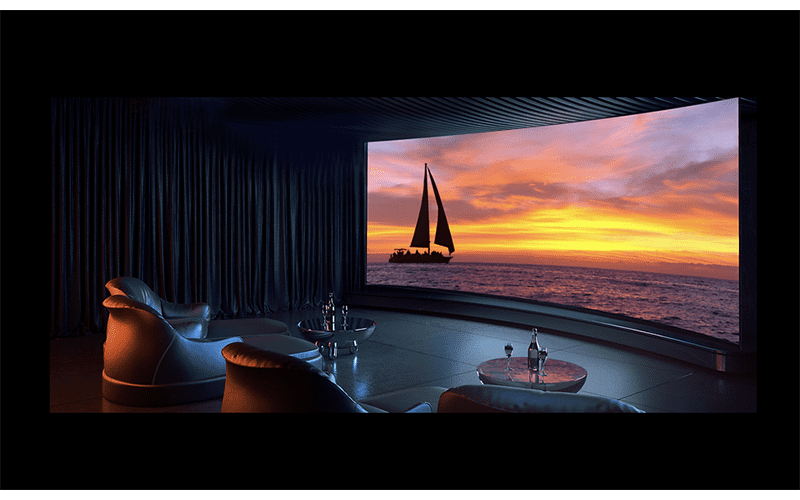
Available in standard configurations ranging from 15 inches to 271 inches, the company also offers custom sizes. Depending on the size and performance level, the XDR3 LED video walls use 0.9mm and 1.2mm dot-pitch modules, and the displays are capable of 4K resolutions, as well the ability to reproduce 100% of the Rec. 709 and DCI color gamuts, and 95% of the BT2020 color gamut.
Roku Plus Series
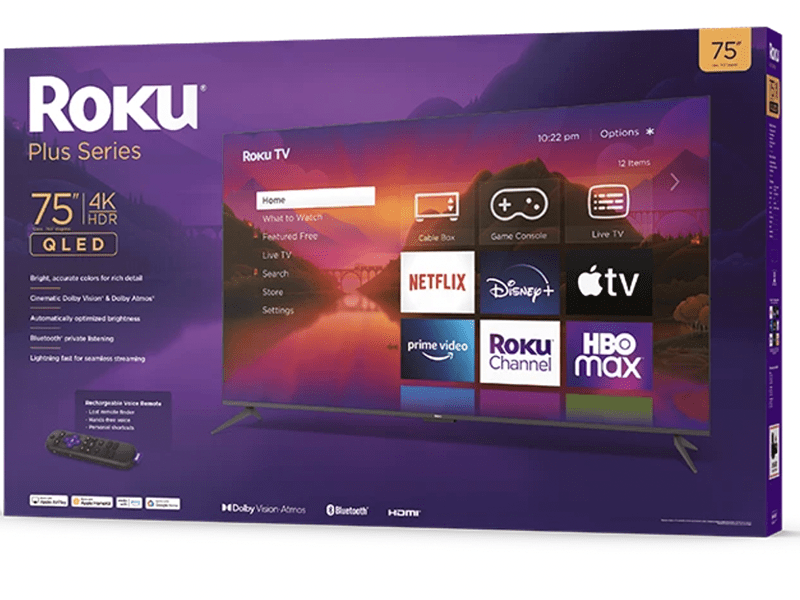
Available at reasonable prices and big-screen TV sizes such as 55, 65, and 75 inches, this product line is built by the company and naturally feature Roku’s popular smart services as a smart TV operating system. The Plus Series utilizes QLED display technologies, and Roku says the products offer Dolby Vision HDR compatibility and its Roku Voice Remote Pro.
Samsung QN65QN800C
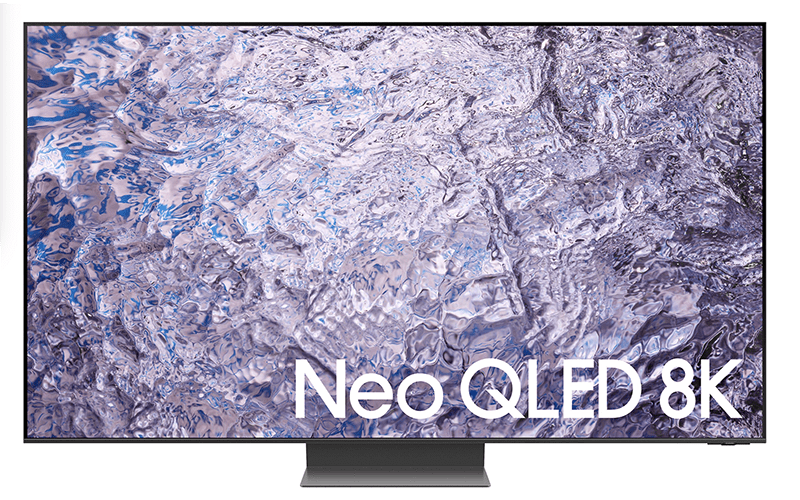
Available for less than $3,000, the 8K Samsung miniLED-based QN65QN800C television features Samsung’s 8K AI upscaling processing technologies. Supporting high performance activities that include gaming, Samsung also points out the QN65QN800C offers 4K resolutions at 120Hz refresh rates, as well as its proprietary Tizen streaming platform to offer a range of streaming services.
SKYWORTH Clarus Outdoor TV
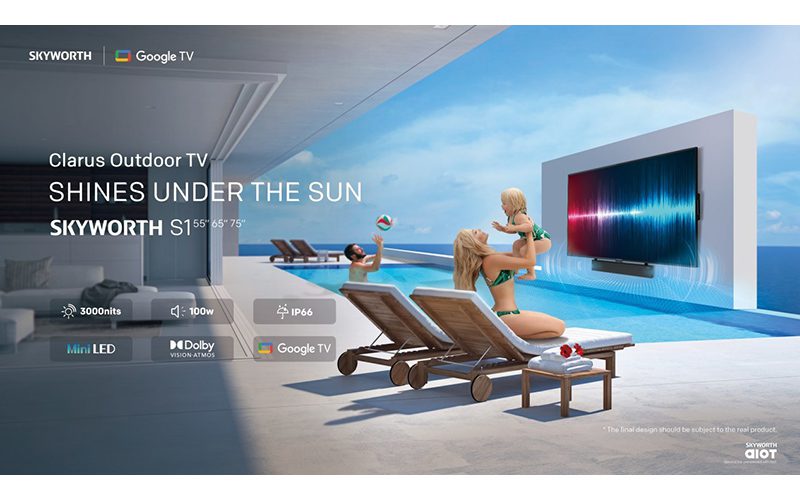
Utilizing a backlit panel with more than 1,400 mini-LEDs, the Clarus S1 outdoor television is capable of producing 3,000 nits of brightness to enable it to deliver quality images in sunny environments. The display manufacturer also emphasizes to help the big-screen product perform reliably over long periods of time, it is IP66 rated to resist a variety of weather conditions. The Clarus outdoor television also features an eight-speaker, 100-watt audio system, and an array of entertainment options through its Google TV smart services.
Sony BRAVIA XR65A80L
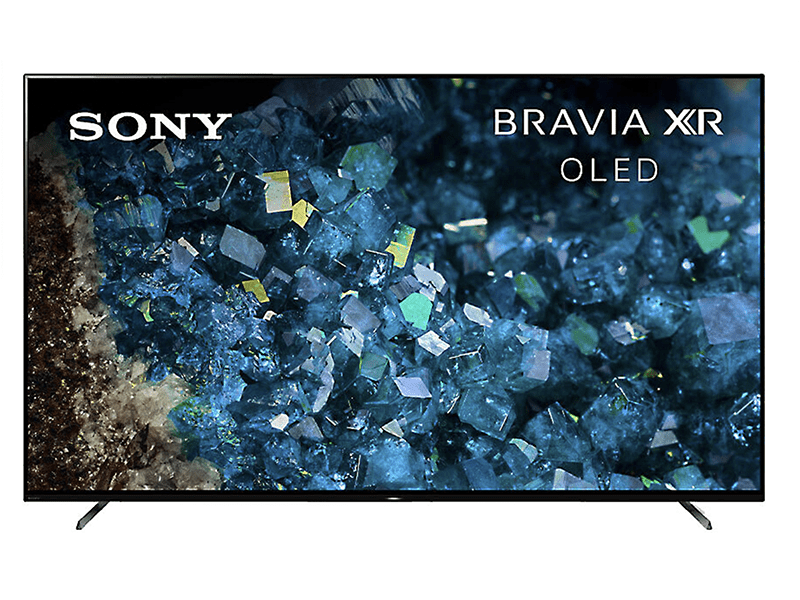
The competitively priced BRAVIA XR65A80L checks in for roughly $2,000, and the 4K television offers compatibility with HDR formats such as Dolby Vision and HLG. The OLED-based display also features Sony’s Cognitive Processor XR, along with several other proprietary video image processing technologies. The 65-inch 4K TV also provides a built-in ATSC 3.0 tuner to support the reception of OTA signals, and the Google TV smart services platform.
TCL 98S550G
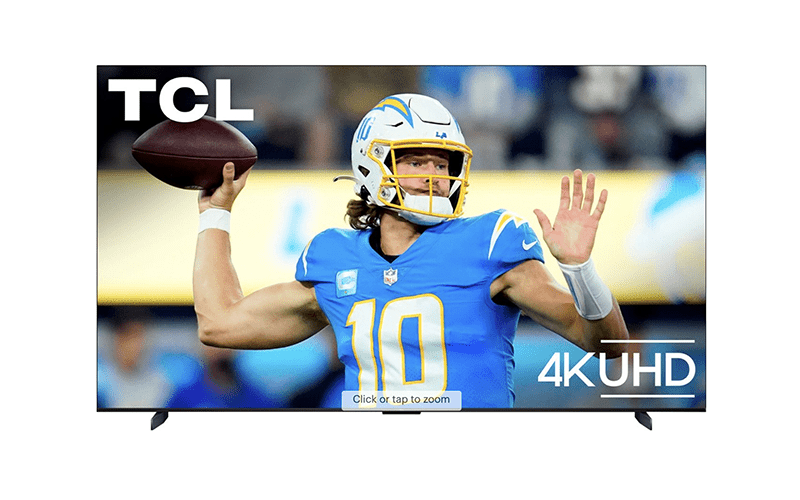
One of the best values in the big-screen TV market, the $5,000 98-inch 98S55OG delivers to homeowners a big-screen 4K image and the ability to reproduce the Dolby Vision IQ, HLG, HDR10 and HDR10+ HDR formats. TCL emphasizes that its reasonably priced 98-inch TV also provides 120Hz refresh rates, wide color gamuts, and Auto Game Mode (ALLM) processing for improved gaming experiences. Additionally, the TV also offers Wi-Fi networking capabilities, voice control options, and the Google TV smart platform.
VIZIO P-Series 75-inch 4K Smart TV
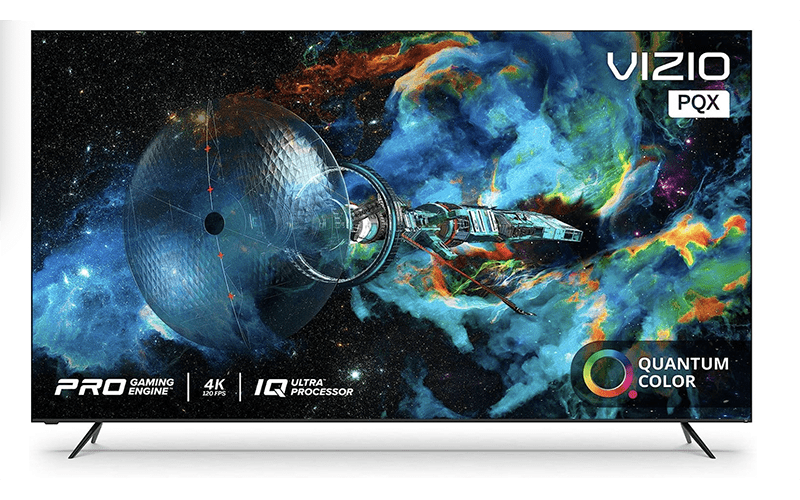
The $1,900 P-Series TV incorporates VIZIO’s Active Full Array backlighting technology and Quantum LED technologies. According to the company, the TV can produce up to 2,800 nits of brightness, and to help it reproduce vivid images, the TV is powered by 480 local dimming zones. The big-screen 75-inch TV also employs VIZIO’s IQ Ultra Processor, and its SmartCast smart TV OS that includes streaming services such as Disney+, Netflix, and YouTube.
